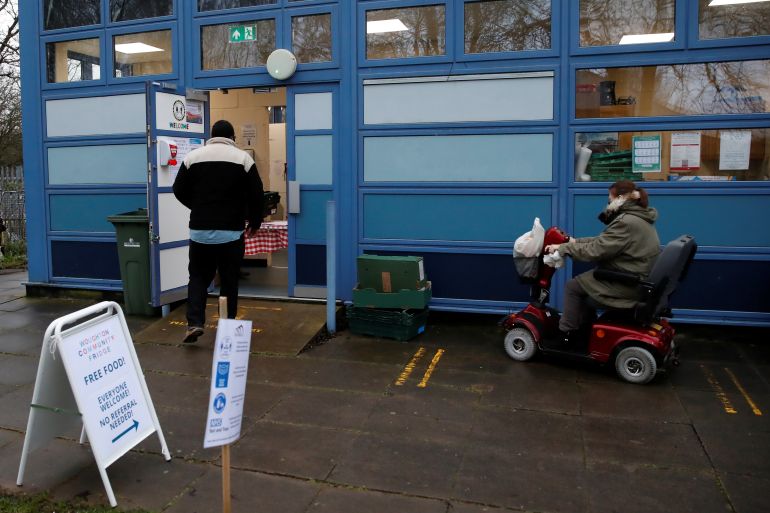Disabled people in UK unable to afford heating, food: Report
Soaring inflation has forced disabled people already beset by lower incomes to cut back on essentials, study says.

Disabled people in the United Kingdom are among the hardest hit by the cost-of-living crisis, a new report has concluded, with comparatively low incomes leaving them exposed to soaring prices.
The Resolution Foundation, an independent think-tank, said on Wednesday that more than 40 percent of people with a disability could no longer afford to keep their homes warm compared with 23 percent of the non-disabled population.
Keep reading
list of 4 itemsStaying warm this winter: How to beat rising home energy costs
Britain’s health workers announce more strikes for 2023
‘By the skin of our teeth’: A UK foster carer’s monthly costs
Meanwhile, nearly one in three disabled people had been forced to reduce their spending on food. Fewer than one in five people without disabilities reported the same issue.
“Disabled people have been stung not just by fast-rising energy prices but also by increasing food prices,” the report said.
“[They] are more likely to be worried about the cost of essentials and to say that the crisis is making their health worse,” it added.
The UK’s inflation rate is currently above 10 percent – the highest level since the 1980s.
But even before the crisis, those with a disability were far more likely to live in materially deprived households, the Resolution Foundation said.
Thirty-three percent of adults in the lowest-income households had a disability. By comparison, in the UK’s richest households, just nine percent of adults had a disability.
About 22 percent of the British population, or more than 14.5 million people, have a disability, according to government data.
The Resolution Foundation report was based on an analysis of official figures and a survey of about 8,000 working-age people, more than 2,000 of whom reported a long-term illness or disability.
Income gap
The think-tank cited a 44 percent income gap between disabled and non-disabled people.
Adults with an underlying disability were found to earn a median income of 19,397 pounds ($23,373) a year, whereas those without a disability earned 27,792 pounds ($33,488).
The gap is partly a result of the relatively low employment rate among disabled people, the report said, with 54 percent of disabled adults in work, compared with 82 percent of non-disabled adults.
“But employment status explains only a third of the income gap between working-age disabled and non-disabled people,” the foundation said.
The remainder is likely explained by the “kinds of jobs disabled people work in – including their typical pay and the number of hours worked”.
Recent government moves to offer disabled people support – such as the repeat of a 150-pound ($180) cost-of-living payment in 2023 and a commitment to raise disability benefits in line with inflation – would help them weather the economic turmoil, said the group.
But Charlie McCurdy, an economist at the think-tank, said further measures are necessary.
“More policy work will be needed, not just through this crisis, but to make more progress on closing the huge income gaps that already existed between disabled people and the rest of the population,” McCurdy said.
In an emailed statement to Al Jazeera, a spokesperson for the Department for Work and Pensions said the government recognised disabled people face additional costs and was “committed” to protecting the most vulnerable.
As part of a 37-billion-pound ($44.6bn) package of support, the government has supported six million people with a disability or health condition over the past year, the spokesperson said.